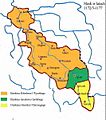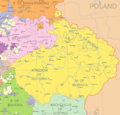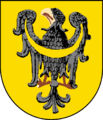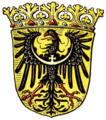Silesia facts for kids
Quick facts for kids
Silesia
|
|||
|---|---|---|---|
|
Historical region
|
|||
|
|||
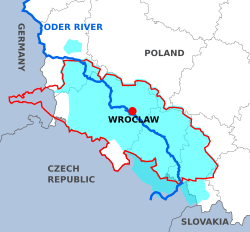
Austrian Silesia,
before 1740 Prussian annexation Prussian Silesia, 1871 Oder riverBasemap shows modern national borders. |
|||
| Country | |||
| Largest city | Wrocław | ||
| Area | |||
| • Total | 40,000 km2 (20,000 sq mi) | ||
| Population | |||
| • Total | c. 8,000,000 | ||
| Time zone | UTC+1 (CET) | ||
| • Summer (DST) | UTC+2 (CEST) | ||
Silesia (pronounced Sih-LEE-zee-uh) is a historical region. It is mostly located in Poland. You can also find parts of Silesia in the Czech Republic and Germany.
For a long time, from 1742 to 1945, Silesia was part of Germany. It was known as a Prussian province. After World War II in 1945, the Soviet army took over Poland. During this time, many changes happened. These changes led to many people leaving their homes and land in Silesia.
Contents
Geography
Silesia is a region with many rivers and mountains. It is located along the upper and middle parts of the Oder River. It also follows the upper Vistula River.
The region is surrounded by two major mountain ranges. These are the Sudetes mountains and the Carpathian Mountains. The highest point in Silesia is a mountain called Śnieżka. It is part of the Sudetes mountains.
Cities
Silesia has many important cities. Here are some of the largest ones. The numbers show how many people lived there in 1939.
| Name | Population |
|---|---|
| Wrocław | 630,041 |
| Katowice | 127,044 (1931) |
| Zabrze | 126,211 |
| Gliwice | 117,323 |
| Chorzów | 102,349 (1931) |
| Bytom | 100,891 |
| Zgorzelec | 93,823 |
| Legnica | 83,701 |
| Walbrzych | 64,072 |
| Opole | 52,992 |
| Racibórz | 50,000 |
Other cities in Silesia include: Brzeg, Boleslawiec, Kozle, Zabkowice Slaskie, Klodzko, Głogów, Strzelce Opolskie, Zielona Gora, Zlotoryja, Jelenia Gora, Glubczyce, Nysa, Swidnica, Trzebnica.
Famous people
Many famous people were born in the Silesia region. They became well-known in different fields.
- Writers, poets and playwrights like Andreas Gryphius, Martin Opitz, Fürst von Pückler-Muskau, Carl Hauptmann, Gerhart Hauptmann (who won the Nobel Prize in Literature in 1912), Joseph Freiherr von Eichendorff, Gustav Freytag
- Members of the German Resistance (people who secretly fought against the Nazi government) such as Peter Graf Yorck von Wartenburg, Helmuth James Graf von Moltke
- Military officers like Manfred von Richthofen, Erwin von Witzleben
- Painters such as Adolph von Menzel
- Philosophers like Jakob Böhme
- Actors like Dieter Hildebrandt, Victor de Kowa, Ludwig M. Lommel, Wolfgang Neuss, Willy Fritsch, Hanna Schygulla, Georg Thomalla
- Politicians like Paul Löbe (SPD), Klaus Töpfer (CDU), Manfred Kanther (CDU), Ferdinand Lassalle, Erich Mende (FDP)
- Scientists like Hans G. Dehmelt (Nobel Prize in Physics, 1989), Paul Ehrlich (Nobel Prize in Medicine, 1908), Friedrich Bergius (Nobel Prize in Chemistry, 1931), Max Born (Nobel Prize in Physics, 1954), Fritz Haber (Nobel Prize in Chemistry, 1918), Reinhard Selten (Nobel Memorial Prize in Economic Sciences, 1994), Konrad Bloch (Nobel Prize in Medicine, 1964), Bernhard Grzimek, Johannes Winkler, Maria Goeppert-Mayer (Nobel Prize in Physics, 1963), Kurt Alder (Nobel Prize in Chemistry, 1950), Otto Stern (Nobel Prize in Physics, 1943)
- Builders and architects like Carl Gotthard Langhans
- Musicians like Katja Ebstein, Roy Etzel, Michael Jary
Images for kids
-
Lands of the Bohemian Crown between 1635 and 1742, before most of Silesia was given to Prussia
-
Typical Silesian baroque architecture in Wrocław
-
Polish names of Silesian cities, from a 1750 Prussian official document published in Berlin during the Silesian Wars
-
Centennial Hall, Wrocław
See also
 In Spanish: Silesia para niños
In Spanish: Silesia para niños





